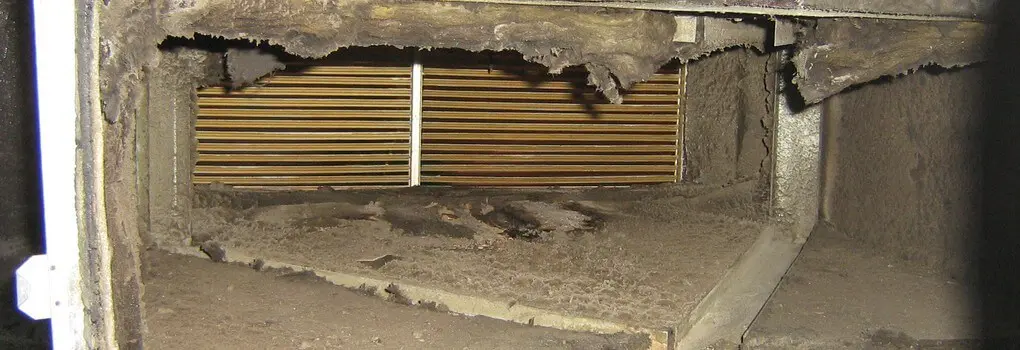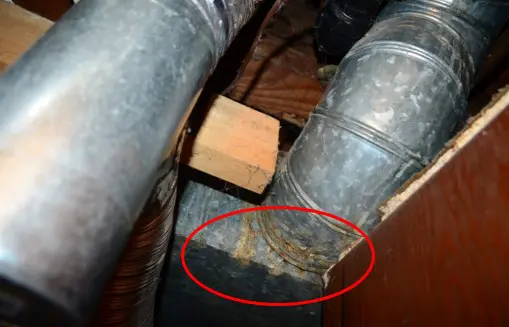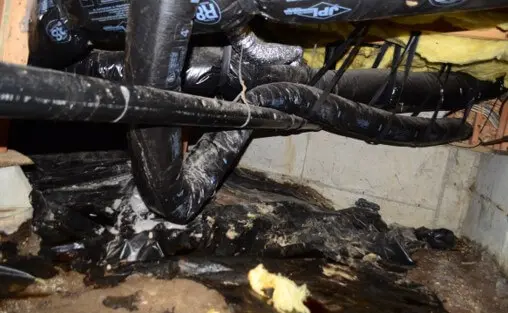Mold Growth in Ducting
Mold growth in ducting is a controversial topic. If you believe what duct cleaning companies tell you, mold is growing in everyone’s ducting. If you believe what the EPA tells you, mold growth in ducts is a rare phenomena. What is the truth? Unsurprisingly, the duct cleaning contractors are a bit overzealous in their claims.
Mold growth in HVAC ducting is quite rare. There are several reasons for this.
1.) Metal is not a good food source. Most ducts are constructed of either metal or plastic. Neither of these materials are particularly efficient sources of food for mold. Thus, for mold growth to occur, a layer of dust must be present on the metal or plastic ducting. Granted, many older homes have a substantial layer of dust within the ducting, which brings us to our next requirement, moisture.
2.) Ducts are typically dry. Mold growth requires elevated levels of moisture to grow. Because ducts are used to transport air throughout the home, they are typically the driest areas within a house. This is due to both the elevated temperatures (in cool climates) and increased air speed. Unless the home suffers from extremely high humidity, the ducts are unlikely to have conditions to mold growth. And if a home does have sufficient humidity to cause mold growth in the ducts, it is assuredly occurring throughout the rest of the home as well.
Exceptions. When does mold growth occur in ducting?

Mold in Ducting
Though uncommon, mold growth does occasionally occur in HVAC ducting. Recently we inspected a home with extremely high levels of humidity. This cause systemic mold growth throughout the entire home, including the duct work. In this particular case, the mold growth was significant enough to require a complete replacement of the ducting rather than simple cleaning.
Crawl space flooding can also lead to extensive mold growth problems in ducting. As you can imagine, submerging duct work in flood water will almost assuredly lead to mold growth. In these cases, cleaning is typically not a viable option and full replacement is warranted.

Water Noted Coming Through HVAC Ducting

Water Damaged HVAC Ducts & Vapor Barrier
Air conditioning. In hot/humid climates, such as the south east, condensation can occur on the outside of the ducting. This develops when the warm, humid air interacts with the cold surface of the ducting, leading to condensation on the outside surface. If dust or debris is present, mold growth can occur. Though this will not directly effect the air quality, as the mold growth is outside the ducts, it can indirectly cause elevated levels of mold growth in the air.
Solutions
Prevention
Reducing moisture in the ducting is the most critical step in preventing mold problems. Many companies will try to sell you on preventative coatings or pre-treatments. However, within days these coatings will become covered with a layer of settled dust, rendering them useless. Don’t spend a penny on cleaning up duct mold problems until you have a clear idea of the cause of the moisture problem. Moisture reduction typically comes down to two areas.
*Heads up – I earn a small commission on sales through Amazon links. This helps cover the expense of running the website (and answering your questions!)
Got a question? Ask it here and we'll post the answer below
I have 1 inch insulation on a basement duct. When I examined the ducting I found some black substance on the yellow insulation. Is this a problem?
You’re very likely seeing dust particulates rather than mold growth. When air flows through the ducts, some of it escapes through the cracks in the joints. When this air hits the insulation, the dust particles are filtered out and deposited on the insulation. The dust itself is harmless. However, the leaky ducts cause higher energy bills and therefore should be sealed. You can see a photo of the phenomenon on attic insulation here (scroll down to “False Alarms”)
